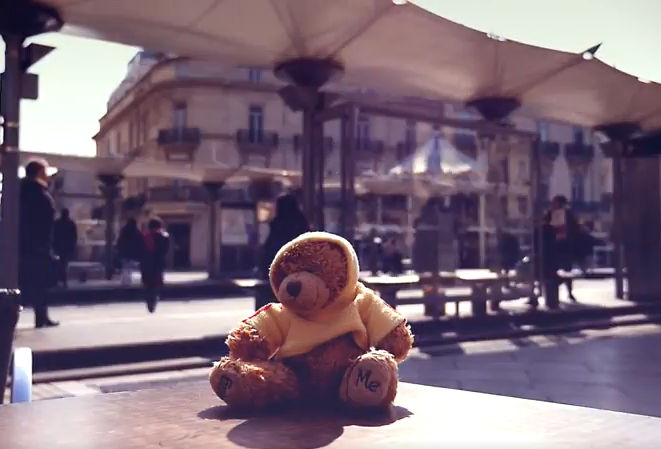What your teddy bear says about you and your relationship with nature
Researchers from the University of Montpellier, the CNRS, the University of Montpellier Paul-Valéry and the University of Aix Marseille have published two complementary studies on a universal and emotional object: the teddy bear. These studies, published in The Journal of Positive Psychology and BioScience, show that far from being mere toys, teddy bears are genuine scientific models for understanding our emotions, our social behavior... and even our connection to nature.

The science of cuteness: beauty, comfort and protection
The first study, published in The Journal of Positive Psychology, involved over 11,000 participants who evaluated 436 teddy bear photos. The result: the "cuteness" of teddy bears is based on a winning trio of beauty, comfort and the desire to protect. "The softer and more beautiful a teddy bear appears, the more its cuteness triggers our desire to protect it", explains Nathalie Blanc (Université de Montpellier Paul-Valéry). In children, all of these dimensions play an equal part in sympathy capital. In adults, however, comfort predominates. "This indicates that for adults, teddy bears are mostly associated with a comforting function, and that this criterion will be decisive when buying for a child," explains Anne-Sophie Tribot (Aix Marseille University). "What's more, bears that are worn, damaged or have very atypical designs generally have less sympathy capital", continues Anne-Sophie Tribot. The study reveals other generational differences: children prefer colorful, atypical and contrasting bears, while adults are more inclined towards brown bears, which are more classic models. The researchers also show that the perception of softness is central, among adults as well as children: "even in photos, it's the cuddly toy we imagine to be the most pleasant to cuddle that appeals to us the most". "Sympathy capital (spontaneously attributed to teddy bears) is not just a matter of aesthetics: it also nurtures empathy and potentially stimulates prosocial behaviour," concludes Nathalie Blanc. There's no doubt that teddy bears are a formidable tool for understanding the psychological workings of the individual.
Too cute to be wild: a mirror of our disconnection from nature
The second study, published in BioScience, was based on a novel analysis: the researchers compared the morphological and colorimetric characteristics of the teddy bears evaluated in their first study with those of real bears. The results show that teddy bears meet universal aesthetic standards: disproportionate heads, prominent eyes, rounded silhouettes, uniform coats and neutral colors, which make them immediately endearing. But these traits don't resemble those of wild bears. "Our analyses reveal that real bears are far from the standards of the most popular stuffed animals: even the panda, which has become a global icon, remains distant from the representations conveyed by teddy bears," points out Nicolas Mouquet (University of Montpellier, CNRS). These differences reflect a profound gap between the emotional experience of nature and its biological reality. "The teddy bear is a mirror of our relationship with nature: it embodies both the tenderness of the emotional bond and our distance from the real world," explains Nicolas Mouquet. "Just like the media and art, toys and stuffed animals play a major role in the dissemination and popularization of idealized representations of the living world", reminds Anne-Sophie Tribot. This idealized vision may seem harmless, but it begs the question: "If our representations of living things are based on overly caricatured symbols, aren't we in danger of losing our ability to perceive and protect the complexity of the natural world?" adds Nicolas Mouquet.
More than just toys!
These two studies converge: teddy bears are not just childhood companions. They act as mirrors of our emotions, our social representations and our relationship with nature. Their sympathetic capital makes them powerful tools for developing empathy in children, calming anxiety in medical environments, or questioning the way we protect biodiversity. "Teddy bears aren't just toys: they're mediators of tenderness, empathy and affection, totems through which we can cultivate pro-nature values; we just have to learn to use them with discernment," concludes Nicolas Mouquet.
Practical information
The peluchology project has been run by the University of Montpellier since 2010, and consists of developing actions to mediate the natural and participatory sciences through collaborative websites, travelling exhibitions, training and events for schools and families. These initiatives are now being rolled out nationwide, following the award of the Science Avec et pour la Société (SAPS) label by the French Ministry of Higher Education.
Contacts article in Journal of Positive Psychology:
- Nathalie Blanc (Université de Montpellier Paul-Valéry), +33 6 07 06 58 44,
- Anne-Sophie Tribot (University of Aix Marseille), +33 6 19 95 08 89.
Contact article in Bioscience:
- Nicolas Mouquet (CNRS), +33 6 32 46 89 54.